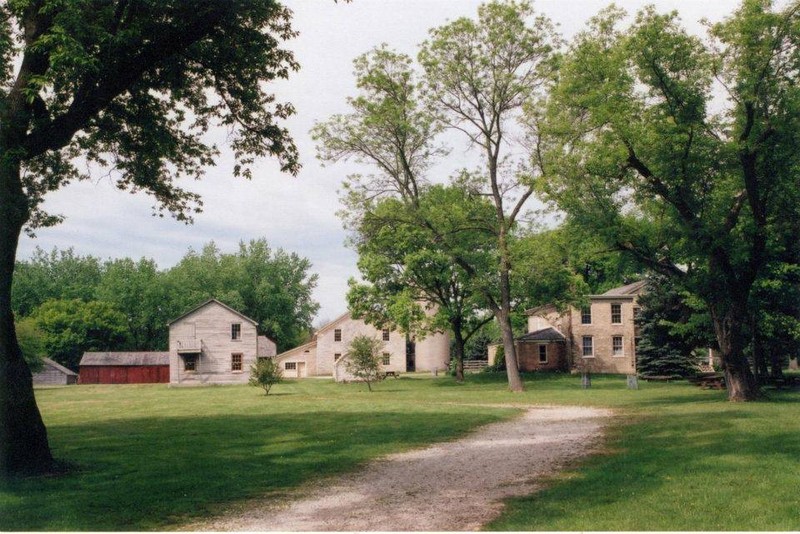Historic Trimborn Farm County Park
Introduction
Text-to-speech Audio
Originally owned by Prussian immigrant Werner Trimborn, Trimborn Farm was the site of a once prosperous lime production business. Starting with only ten acres, Trimborn was eventually able to expand to approximately 500 acres. Lime was in high demand as it was a main ingredient in mortar used in building stone and brick buildings. This area was rich in limestone which was close to the surface and easily quarried.
Even after Trimborn's death, his family operated the farm. Today, the farm is owned by the Milwaukee County Park System and operated by the Milwaukee County Historical Society. It is the location of nine historical structures including one of the largest and last stone barns in the state, farmhouse, a workman's bunkhouse, threshing barn, and 75-foot kiln.
Images
Trimborn Farm from the east.

Backstory and Context
Text-to-speech Audio
n 1847, Werner Trimborn and his children came from Prussia to Milwaukee where he joined with Jacob Kier to acquire a quarry, kiln, and ten acres in order to create a lime production business--what became known as Trimborn Farm. This was a smart business investment at the time since lime was an important resource for construction, paper production, water purification, food preservation, and agricultural fertilization. Before long the farm was yielding 350 barrels of lime a day. By the late 1870s, Trimborn Farm encompassed over 530 acres and employed approximately 43 people."
Werner Trimborn passed away in 1879, and his sons August and Leonard took over the business. As Portland cement replaced lime in construction, the Trimborn sons made the decision to lease the farm and business. From 1882 to 1900, the farm was rented to outside investors, but over time the brothers began to sell sections of the property.
Theodore Vollmer purchased the majority of the original land, and he operated it as a dairy farm. In 1919, the Froemming family purchased and farmed another portion of the original property. They are best remembered for constructing greenhouses that were in use until the 1980s. In 1928, a large portion of the Froemming land was donated to Whitnall Park. Thomas Saxe, a gentleman farmer and movie theater entrepreneur, purchased what was left of Trimborn Farm. He was a guiding force in early movie theaters throughout the state, most notably the Oriental Theater on Milwaukee’s Eastside.
Eventually the farmland fell into the hands of the federal government. While the construction of the greenbelt community was underway, the Greendale Resettlement Administration used the farmland for a housing and staging area for Civilian Conservation Corps workers. The land then once again became privately owned.
In 1980, the farmland was purchased by the Milwaukee County Park System. A restoration project was soon underway so that the property structures and their histories could be properly interpreted and preserved. In 2004, the Milwaukee County Historical Society began managing the site. The historic site features several buildings including a Cream City brick farmhouse, one of the last stone barns in the state, a workman's bunkhouse, threshing barn, and 75-foot kiln.
Cite This Entry
Van Beckum, Janean. "Historic Trimborn Farm County Park." Clio: Your Guide to History. August 26, 2024. Accessed April 22, 2025. https://theclio.com/entry/184947
Sources
Anderson, Harry H. (July 1977). Historic Sites Report, Trimborn Farm and Jeremiah Curtin House. Milwaukee County Historical Society.
Werner Trimborn vs. Jacob Kier. In the Milwaukee County Historical Society Collection Mss-1172.
Scrapbooks In the Milwaukee County Historical Society Collection Mss-1172.
Milwaukee County Historical Society.

